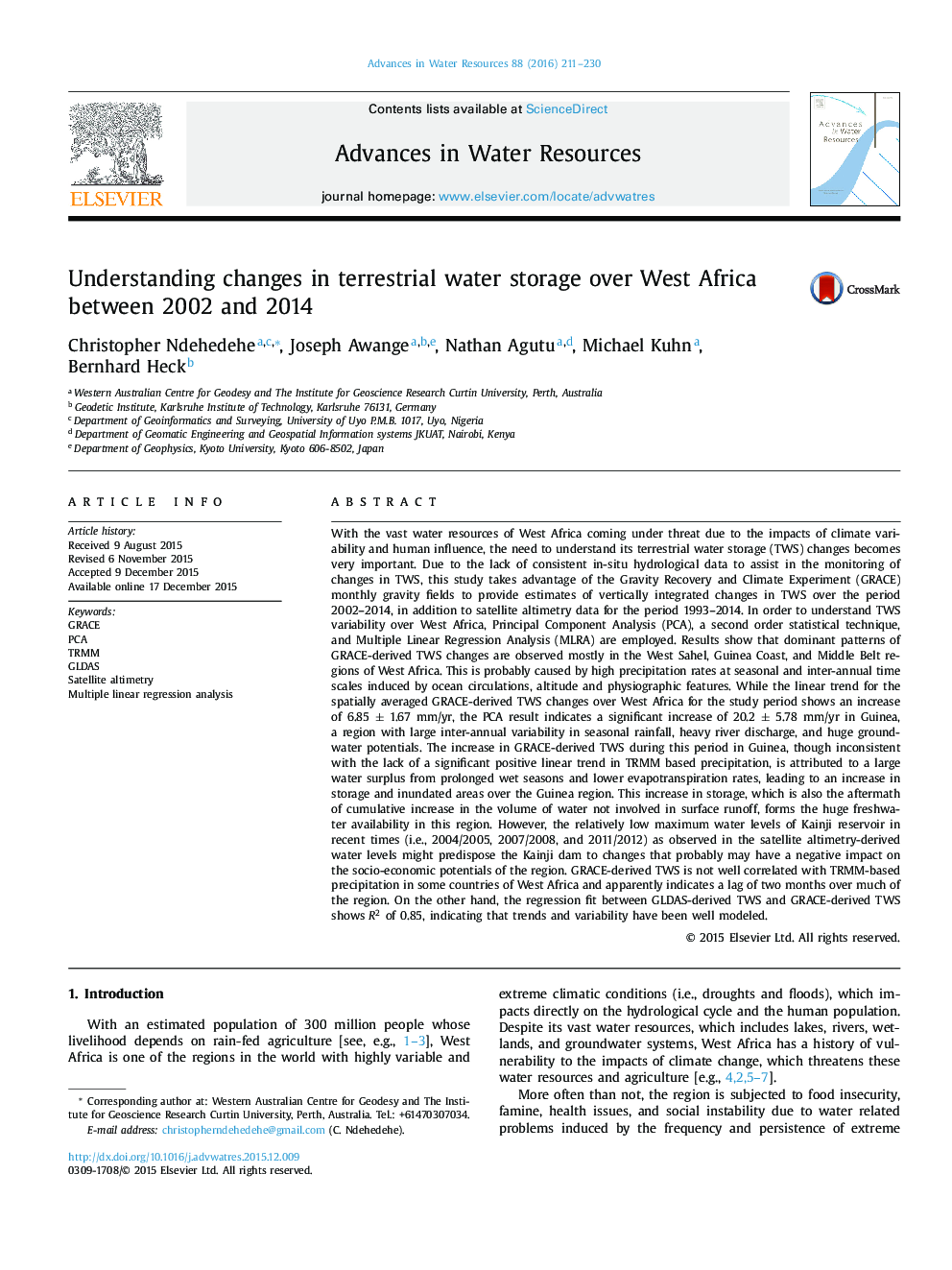| کد مقاله | کد نشریه | سال انتشار | مقاله انگلیسی | نسخه تمام متن |
|---|---|---|---|---|
| 4525334 | 1625622 | 2016 | 20 صفحه PDF | دانلود رایگان |
• High annual variability of GRACE-derived surface mass variations is observed at Guinea due to a considerable high rainfall amounts at seasonal and inter-annual time scales.
• Analysis of TWS variability indicates an overall increase within the period studied and a water deficit between 2002 and mid-2007 over West Africa.
• Significant increase in the linear trend of TWS change over Guinea is inconsistent with observed trend in TRMM-based precipitation.
• Precipitation over the region is dominated by annual and semi-annual signals.
• GRACE-derived TWS is not well correlated with TRMM-based precipitation in some countries of West Africa and indicates a lag of two months over much of the region.
With the vast water resources of West Africa coming under threat due to the impacts of climate variability and human influence, the need to understand its terrestrial water storage (TWS) changes becomes very important. Due to the lack of consistent in-situ hydrological data to assist in the monitoring of changes in TWS, this study takes advantage of the Gravity Recovery and Climate Experiment (GRACE) monthly gravity fields to provide estimates of vertically integrated changes in TWS over the period 2002–2014, in addition to satellite altimetry data for the period 1993–2014. In order to understand TWS variability over West Africa, Principal Component Analysis (PCA), a second order statistical technique, and Multiple Linear Regression Analysis (MLRA) are employed. Results show that dominant patterns of GRACE-derived TWS changes are observed mostly in the West Sahel, Guinea Coast, and Middle Belt regions of West Africa. This is probably caused by high precipitation rates at seasonal and inter-annual time scales induced by ocean circulations, altitude and physiographic features. While the linear trend for the spatially averaged GRACE-derived TWS changes over West Africa for the study period shows an increase of 6.85 ± 1.67 mm/yr, the PCA result indicates a significant increase of 20.2 ± 5.78 mm/yr in Guinea, a region with large inter-annual variability in seasonal rainfall, heavy river discharge, and huge groundwater potentials. The increase in GRACE-derived TWS during this period in Guinea, though inconsistent with the lack of a significant positive linear trend in TRMM based precipitation, is attributed to a large water surplus from prolonged wet seasons and lower evapotranspiration rates, leading to an increase in storage and inundated areas over the Guinea region. This increase in storage, which is also the aftermath of cumulative increase in the volume of water not involved in surface runoff, forms the huge freshwater availability in this region. However, the relatively low maximum water levels of Kainji reservoir in recent times (i.e., 2004/2005, 2007/2008, and 2011/2012) as observed in the satellite altimetry-derived water levels might predispose the Kainji dam to changes that probably may have a negative impact on the socio-economic potentials of the region. GRACE-derived TWS is not well correlated with TRMM-based precipitation in some countries of West Africa and apparently indicates a lag of two months over much of the region. On the other hand, the regression fit between GLDAS-derived TWS and GRACE-derived TWS shows R2 of 0.85, indicating that trends and variability have been well modeled.
Journal: Advances in Water Resources - Volume 88, February 2016, Pages 211–230
